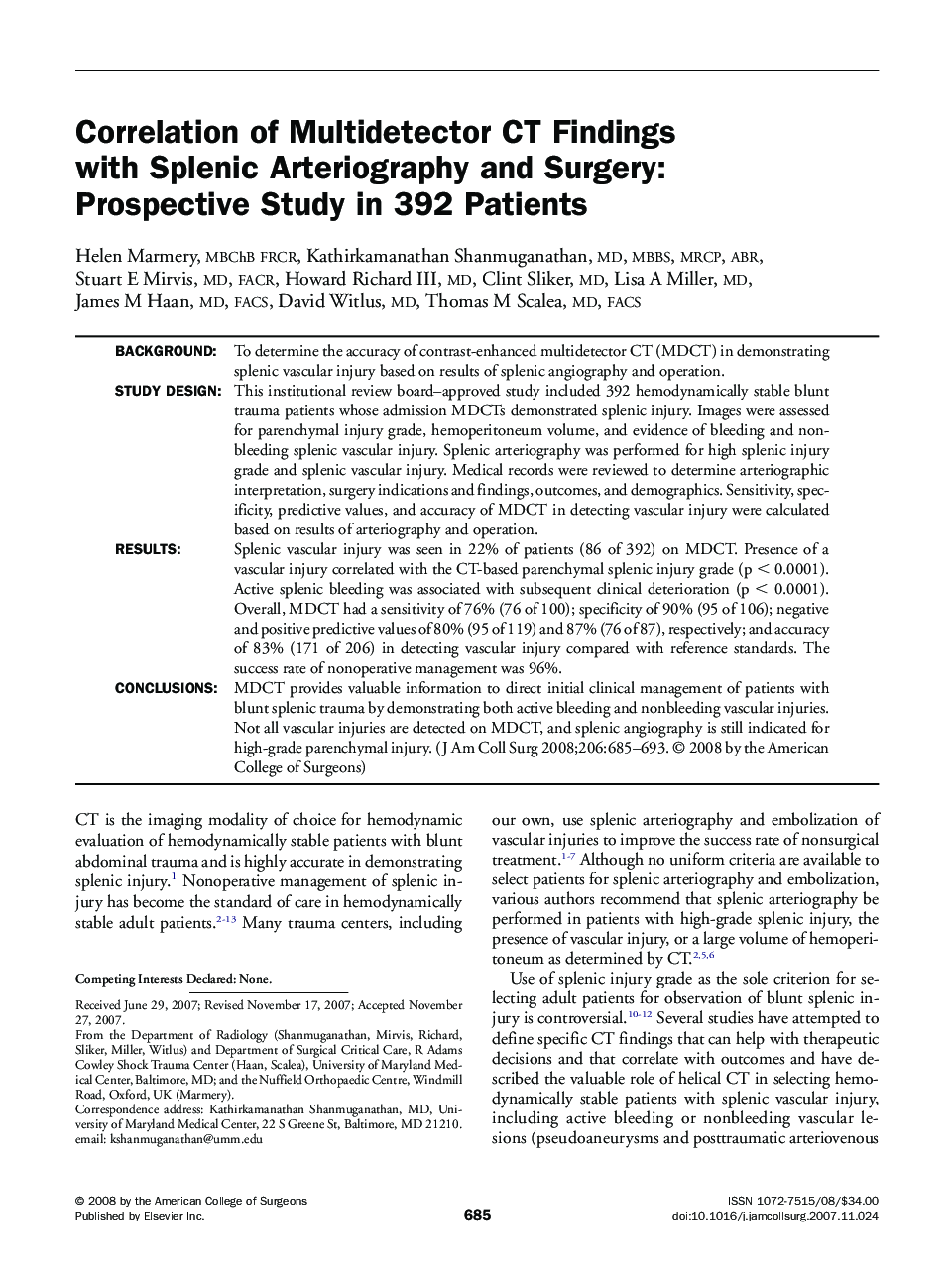| Article ID | Journal | Published Year | Pages | File Type |
|---|---|---|---|---|
| 4293975 | Journal of the American College of Surgeons | 2008 | 9 Pages |
BackgroundTo determine the accuracy of contrast-enhanced multidetector CT (MDCT) in demonstrating splenic vascular injury based on results of splenic angiography and operation.Study DesignThis institutional review board–approved study included 392 hemodynamically stable blunt trauma patients whose admission MDCTs demonstrated splenic injury. Images were assessed for parenchymal injury grade, hemoperitoneum volume, and evidence of bleeding and nonbleeding splenic vascular injury. Splenic arteriography was performed for high splenic injury grade and splenic vascular injury. Medical records were reviewed to determine arteriographic interpretation, surgery indications and findings, outcomes, and demographics. Sensitivity, specificity, predictive values, and accuracy of MDCT in detecting vascular injury were calculated based on results of arteriography and operation.ResultsSplenic vascular injury was seen in 22% of patients (86 of 392) on MDCT. Presence of a vascular injury correlated with the CT-based parenchymal splenic injury grade (p < 0.0001). Active splenic bleeding was associated with subsequent clinical deterioration (p < 0.0001). Overall, MDCT had a sensitivity of 76% (76 of 100); specificity of 90% (95 of 106); negative and positive predictive values of 80% (95 of 119) and 87% (76 of 87), respectively; and accuracy of 83% (171 of 206) in detecting vascular injury compared with reference standards. The success rate of nonoperative management was 96%.ConclusionsMDCT provides valuable information to direct initial clinical management of patients with blunt splenic trauma by demonstrating both active bleeding and nonbleeding vascular injuries. Not all vascular injuries are detected on MDCT, and splenic angiography is still indicated for high-grade parenchymal injury.
